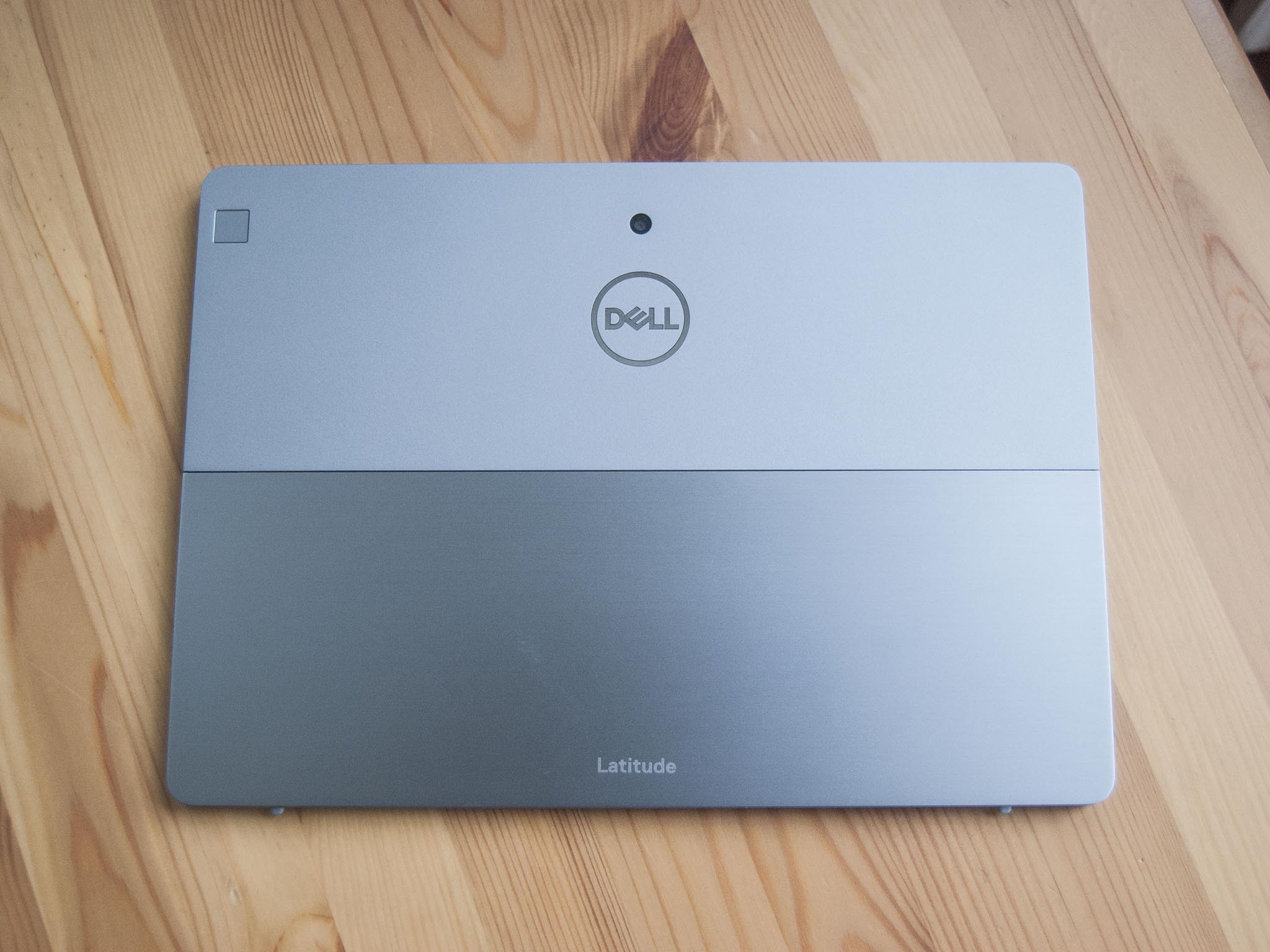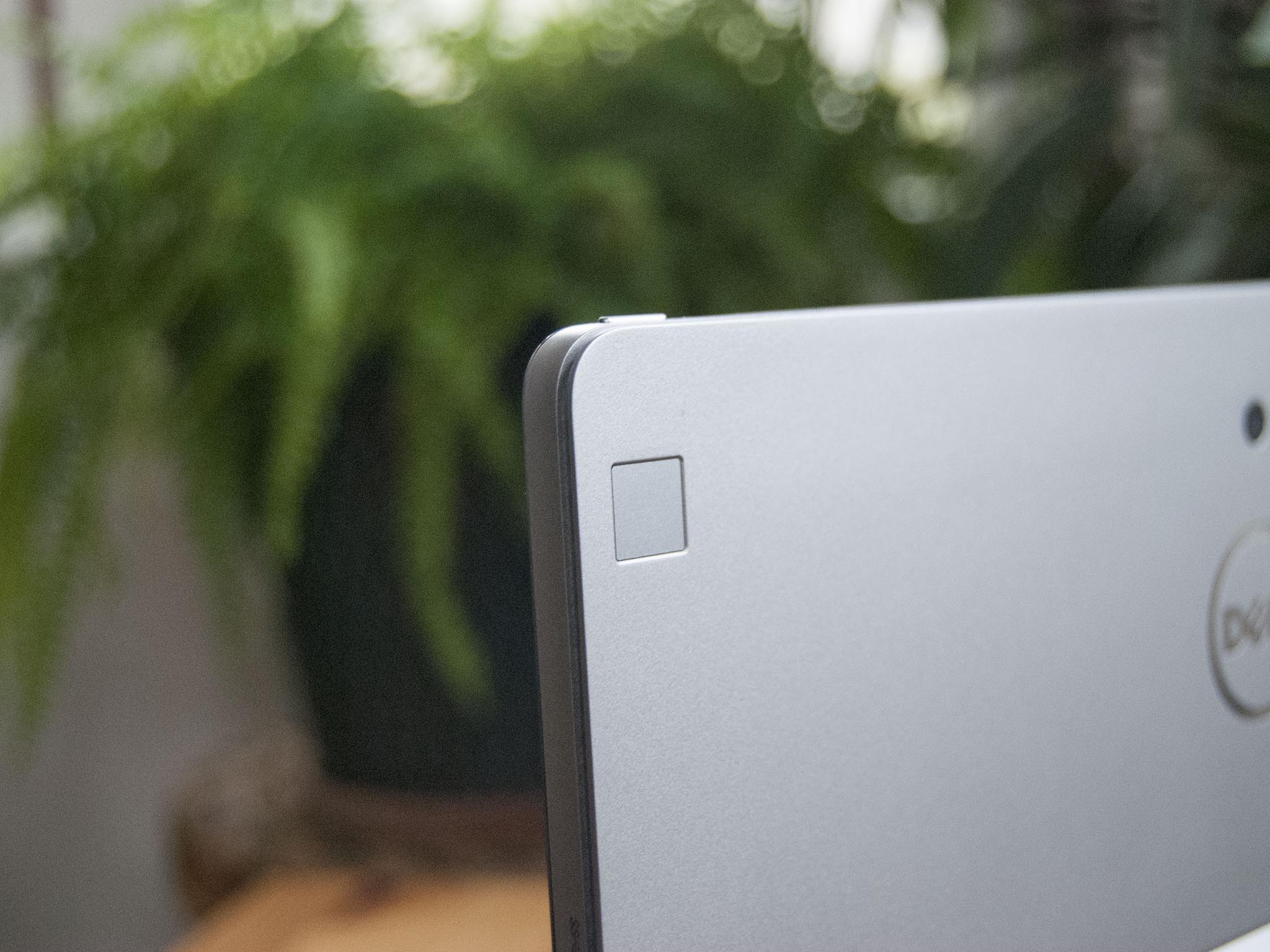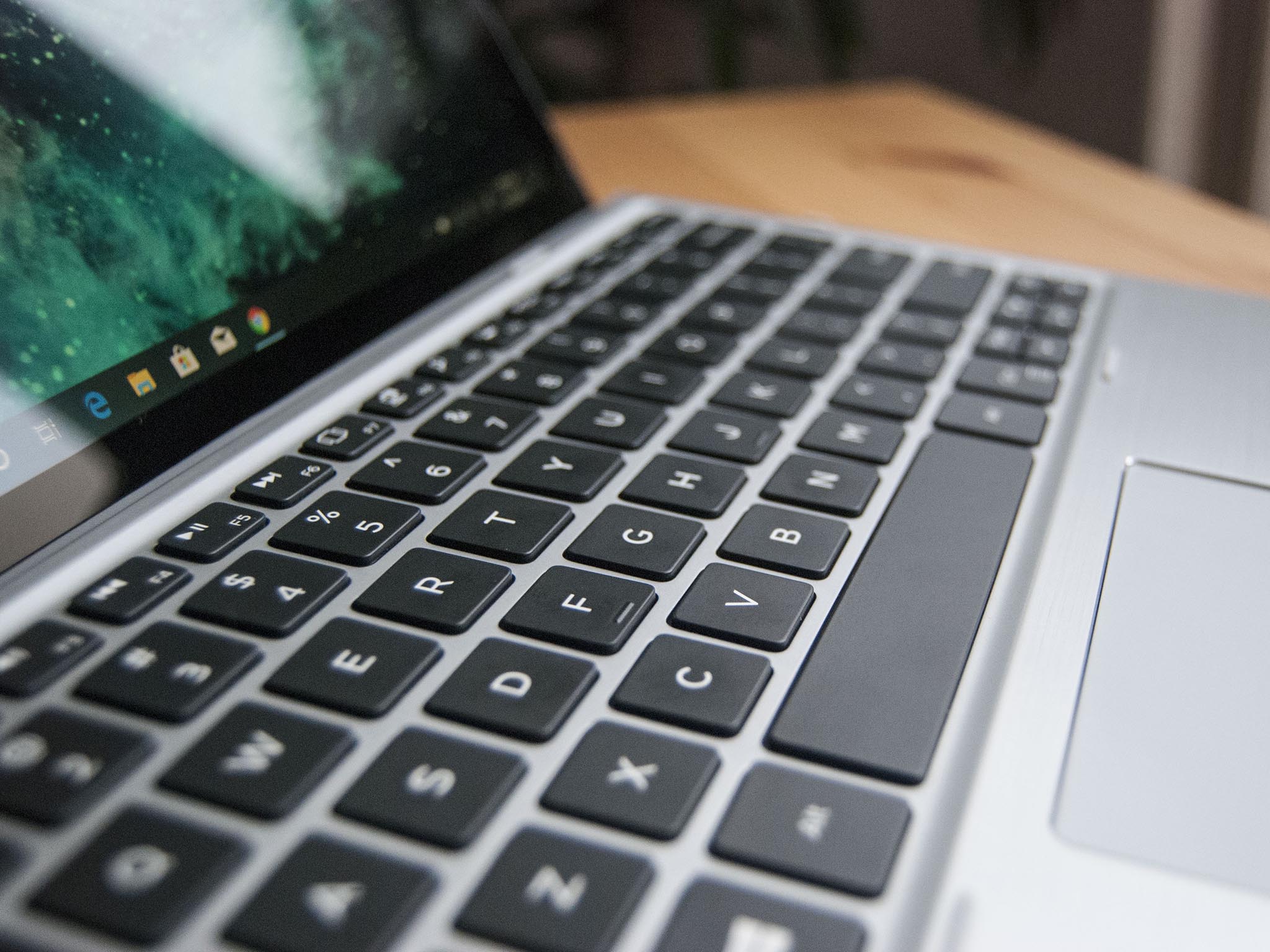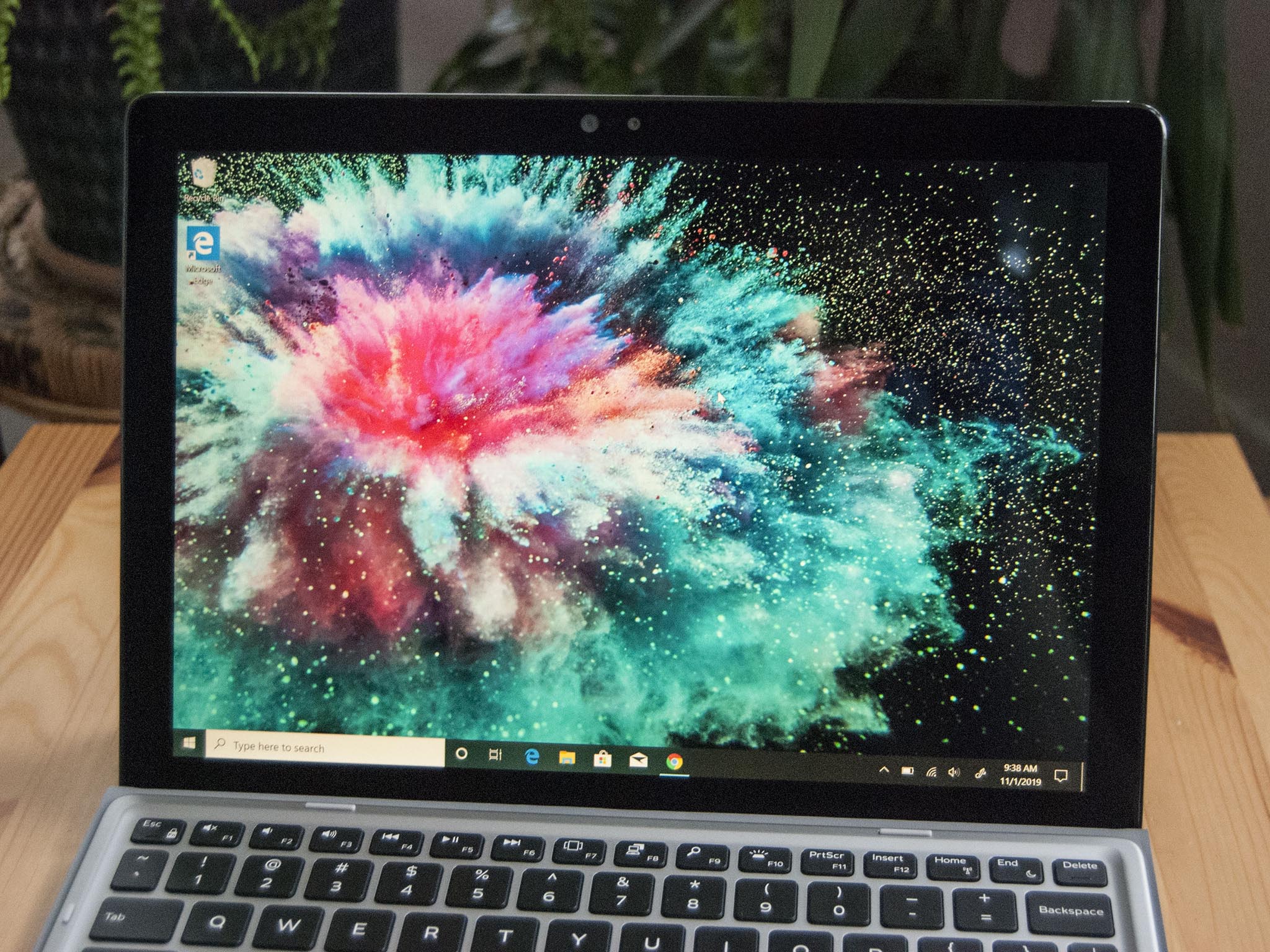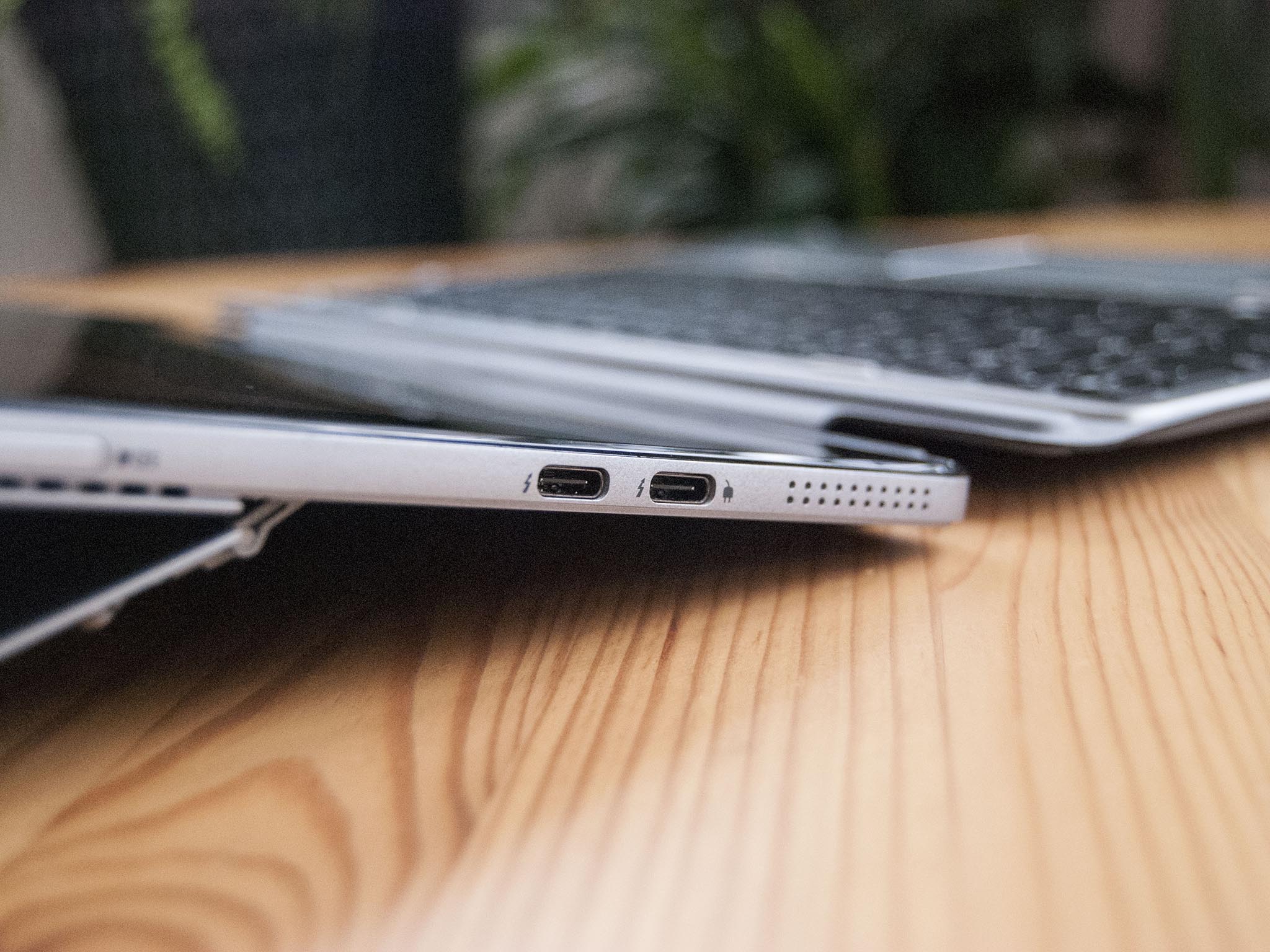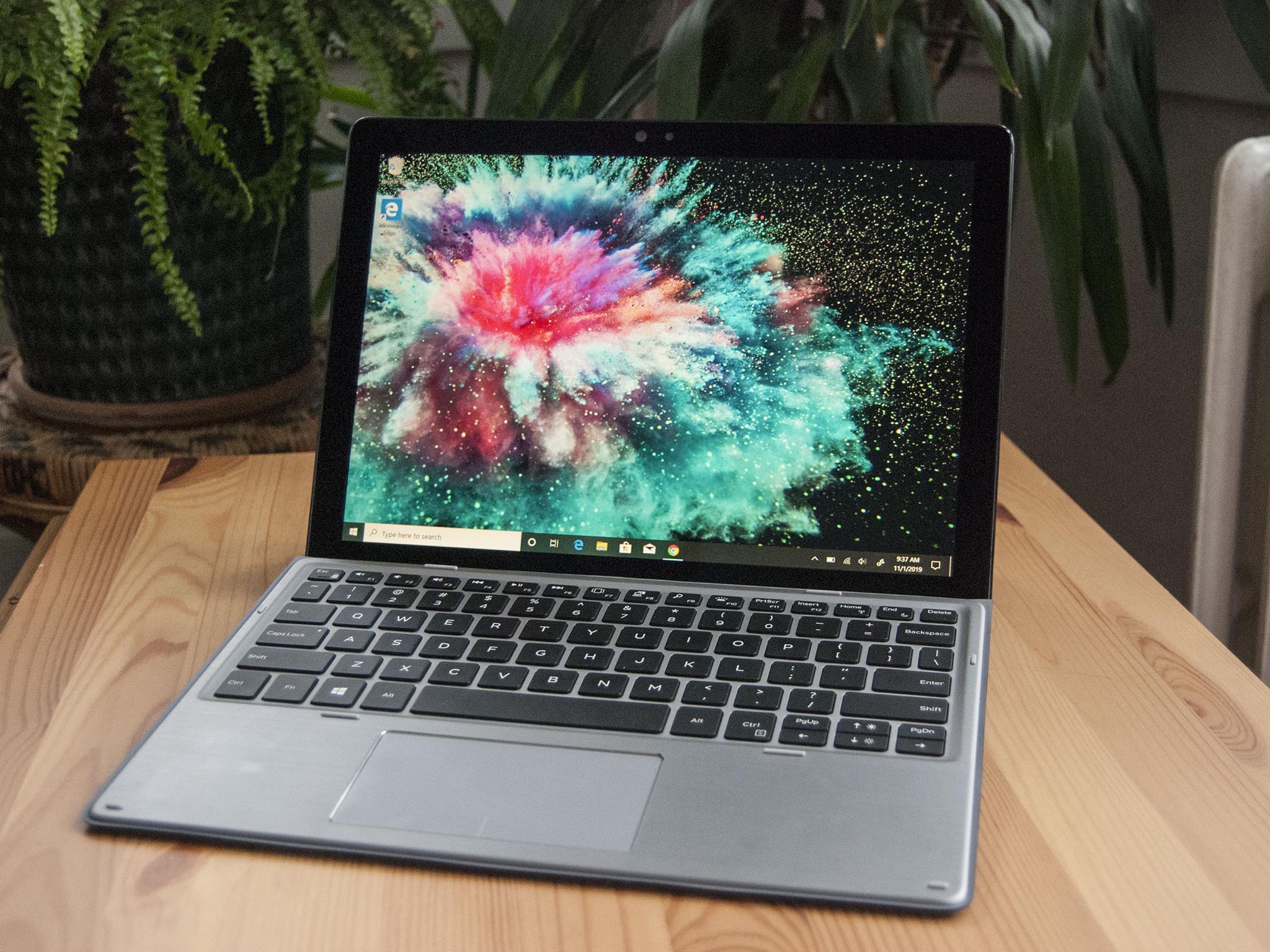
Dell's Latitude 7200 is a true 2-in-1 with a detachable keyboard, folding stand, and active pen support. In a lot of ways, it mimics the Surface Pro lineup, though it includes some features more cut out for the business world. I've been using it regularly for about a week to see what it's all about and, ultimately, whether or not it's worth a buy.
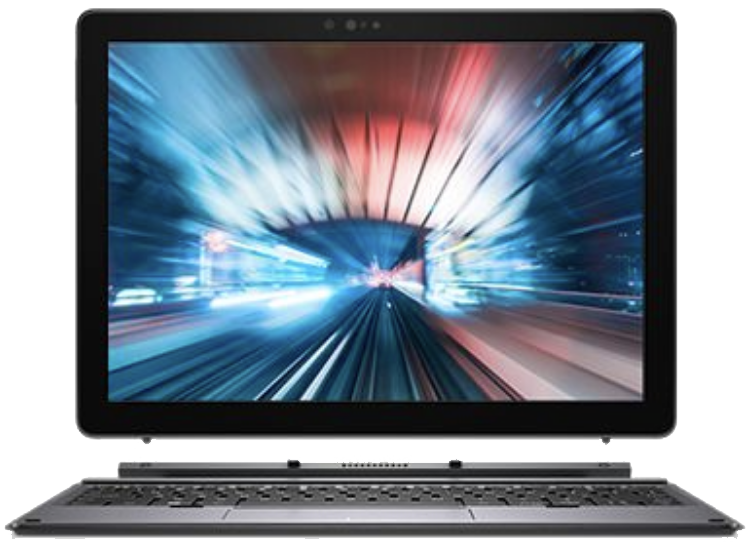
Bottom line: The Latitude 7200 offers essential business features — vPro CPUs, Smart Card reader, LTE connectivity, and biometric hardware — in a well-built 2-in-1 chassis. However, you don't get the added benefits of newer 10th Gen CPUs, and the lone FHD display option might not be enough for some people.
Pros
- Two Thunderbolt 3, USB-A
- 3:2 aspect ratio for the 12.3-inch display
- LTE connectivity optional
- Strong performance without much heat
- Upgradeable M.2 SSD
Cons
- One resolution option for display
- Relatively short keyboard travel
- Keyboard and pen sold separately
- High-end models quite expensive
Dell Latitude 7200 2-in-1 at a glance
Dell supplied Windows Central with a review unit of the Latitude 7200 2-in-1 complete with 8th Gen Intel Core i7-8665U "Whiskey Lake" vPro processor (CPU), 16GB of LPDDR3 RAM, and a speedy 512GB M.2 PCIe NVMe solid-state drive (SSD). This is a rather high-end model that retails for about 2,119, making it more expensive than a similar Surface Pro 7 and ThinkPad X1 Tablet.
A keyboard was included with the review unit, though if you're buying from Dell you will likely need to add one to the tablet for about $150. Adding a compatible pen, in this case the Dell PN579X, will set you back another $100.
You can grab a baseline Latitude 7200 2-in-1 model for about $919, though it's outfitted with an underwhelming 8th Gen Intel Core i3-8145U CPU, 4GB of RAM, and a 128GB M.2 PCIe SSD. All models, no matter the performance hardware, come with a 12.3-inch touch display with 3:2 aspect ratio, set at a 1920x1280 resolution. You can add an optional IR camera and an optional fingerprint reader for some extra security, and there's likewise the option for a Smart Card reader. If you're looking to stay connected everywhere you go, LTE connectivity can also be added.
Here's a detailed breakdown of the hardware inside the review unit I tested.
| Category | Spec |
|---|---|
| OS | Windows 10 Pro |
| Processor | 8th Gen Intel Core i7-8665U vPro Up to 4.80 GHz |
| RAM | 16GB LPDDR3-2133MHz |
| Graphics | Integrated Intel UHD 620 |
| Storage | 512GB M.2 PCIe NVMe SSD |
| Display | 12.3 inches 1920x1280 (FHD) Anti-glare touch 3:2 aspect ratio |
| Ports | Two Thunderbolt 3 USB-A 3.1 (Gen 1) 3.5mm audio microSD card reader Nano SIM slot Wedge lock |
| Audio | Dual Stereo speakers MaxxAudio Pro |
| Wireless | Intel Wireless-AC 9560 802.11ac (2 x 2) Bluetooth 5.0 |
| Camera | Front-facing 5MP (1080p) Rear-facing 8MP (1080p) |
| Biometrics | Fingerprint reader (optional) IR camera (optional) |
| Keyboard | Three-stage backlight Sold separately |
| Touchpad | Precision |
| Pen | Dell PN579X Sold separately |
| Battery | 38Wh |
| Dimensions | 11.5 x 8.22 x 0.37 inches (292mm x 208.8mm x 9.35mm) |
| Weight | From 2.06 pounds (935g) |
What you'll love about the Dell Latitude 7200 2-in-1
The Latitude 7200 2-in-1's design doesn't stray too far from what we've come to expect from these types of devices, with a folding kickstand taking up half the back of the tablet and a detachable keyboard that turns it into a notebook. The main chassis is made from a mix of aluminum and magnesium, with an extremely solid feel that you want for a business laptop. The stand extends out to about 150 degrees — the same as the Surface Pro 4 before newer versions upped it to 165 degrees — on dual hinges, which have a smooth action. Two small, spring-loaded feet on the bottom edge of the tablet release the stand automatically when pressure is applied. This is a nice little feature that removes the need to turn the tablet around and release the stand; just set the tablet (heavily) on a surface, and the stand pops out. The same trick can be performed with the cover attached, thanks to extensions for the feet on the bottom of the keyboard.
The Latitude 7200 2-in-1 brings modern port selection, plenty of security features to a proven design.
The tablet without keyboard weighs only about two pounds (935g) and is just 0.37 inches (9.35mm) thick, and the keyboard is quite light despite the aluminum finish around the Precision touchpad and keys. It should prove more durable and less prone to grime and wear than the Alcantara or standard Type Covers compatible with Surface, and it adds a lot of rigidity for typing on your lap. It's not as attractive or comfortable as other options, but it matches the rest of the device well. Travel isn't nearly as deep as you'll find on a ThinkPad, but it's not a deal-breaker. I typed thousands of words on it, and though it's a bit small for my liking, it was easy to get used to. Keys have a standard three-stage backlight for working in the dark.
All the latest news, reviews, and guides for Windows and Xbox diehards.
The right side of the tablet includes a USB-A 3.1 port and a lock slot for office environments, while the left side has two Thunderbolt 3 ports (one for charging), a microSD card reader, and a 3.5mm audio jack. The jack sits at the top corner, keeping a headset cable out of the way if you're holding the tablet. If you find that there aren't enough ports, you can always add a powerful Thunderbolt 3 docking station, though you shouldn't have any issue setting up multiple monitors with the standard ports.
You can add a Smart Card reader for Enterprise buys, but more standard security features include an optional IR camera for facial recognition and optional fingerprint reader. The latter is embedded in the back panel, near the top corner where the power button also resides. It's a functional design choice that you'll no doubt appreciate; my finger was in the area anyway when picking up the tablet, making logins quick and easy. A front-facing FHD webcam (5MP) does a decent job with video conferencing, and you can step things up to 8MP with the rear-facing camera.
The performance was rock-solid from the 8th Gen Core i7-8665U vPro CPU, 16GB of RAM, and 512GB M.2 PCIe SSD. It handled all productivity work with ease and was able to manage some photo editing and light gaming with integrated Intel UHD 620 graphics. It's not a device cut out for heavy specialized work or gaming, but for office work, it's not going to have an issue. The back panel can be removed, and the M.2 SSD can be upgraded, but RAM is permanently soldered to the board. Due to the lack of 10th Gen CPUs, there is no Wi-Fi 6 support for unreal wireless speeds, but you can add optional LTE connectivity for staying connected just about anywhere.
The Latitude 7200 2-in-1 warmed up during the benchmark tests I put it through, but never got too hot. Cooling seems to be adequate, and if the fan did turn on, I didn't notice. With a full charge in the 38Wh battery, I nearly managed to get through a full eight-hour workday without needing to plug in. I did have to lower performance and brightness to get through the last couple of hours, and it was completely drained at the end of the day. I really wasn't pushing the laptop, so expect lesser battery life if you're working with Office or streaming a lot of video.
CPU
Geekbench 5.0 Benchmarks (Higher is better)
| Device | CPU | Single core | Multi core |
|---|---|---|---|
| Dell Latitude 7200 2-in-1 | i7-8665U | 1,197 | 3,251 |
| Surface Pro 7 | i5-1035G4 | 1,191 | 4,441 |
| Surface Laptop 3 13.5 | i5-1035G7 | 1,177 | 4,413 |
| Surface Laptop 3 15 | Ryzen 5 | 769 | 2,720 |
| Dell XPS 13 2-in-1 7390 | i7-1065G7 | 1,209 | 3,571 |
| Dell Latitude 13 7300 | i7-8665U | 1,182 | 3,525 |
| Dell XPS 15 7590 | i9-9980HK | 1,176 | 7,624 |
| Dell Inspiron 13 7390 2-in-1 | i7-8565U | 1,111 | 2,965 |
| Dell Precision 3541 | i7-9750H | 1,117 | 4,720 |
There's strong performance as expected here. The 8th Gen chip doesn't compare to the new 10th Gen CPUs in terms of multi-core performance, but it still matches single-core scores.
Cinebench
Cinebench R20 (higher is better)
| Device | CPU | Range |
|---|---|---|
| Dell Latitude 7200 2-in-1 | i7-8665U | 1,214 to 1,253 |
| Surface Pro 7 | i5-1035G4 | 1,201 to 1,479 |
| Surface Laptop 3 13.5 | i5-1035G7 | 1,584 to 1,606 |
| Surface Laptop 3 15 | Ryzen 5 | 1,523 to 1,610 |
| Surface Laptop 3 15 | i7-1065G7 | 1,703 to 1,745 |
Running Cinebench four times in a row, the scores show the following ranges. Typically, the results drop on successive runs due to thermal constraints on the processor. However, the Latitude 7200 2-in-1 actually improved on its score the first three runs before dipping slightly on the fourth.
GPU
Geekbench 5.0 OpenCL (higher is better)
| Device | GPU | Compute score |
|---|---|---|
| Dell Latitude 7200 2-in-1 | Intel UHD 620 | 5,343 |
| Surface Laptop 3 15 | Vega 9 | 11,334 |
| Surface Pro 7 | Iris Plus | 7,613 |
| Surface Pro 6 | Intel UHD 620 | 5,396 |
| Dell Latitude 13 7300 | Intel UHD 620 | 5,409 |
| Dell Inspiron 13 7390 2-in-1 | Intel UHD 620 | 5,632 |
| Dell Precision 3541 | NVIDIA Quadro P620 | 12,469 |
PCMark
PCMark 10
| Device | CPU | Score |
|---|---|---|
| Dell Latitude 7200 2-in-1 | i7-8665U | 3,855 |
| Surface Pro 7 | i5-1035G4 | 3,992 |
| Surface Laptop 3 13.5 | i5-1035G7 | 3,643 |
| Dell XPS 13 2-in-1 7390 | i7-8565U | 4,427 |
| Dell Latitude 13 7300 | i7-8665U | 4,139 |
| Dell XPS 15 7590 | i9-9980HK | 5,521 |
| Dell Inspiron 13 7390 2-in-1 | i7-8565U | 3,764 |
SSD
CrystalDiskMark (Higher is better)
| Device | Read | Write |
|---|---|---|
| Dell Latitude 7200 2-in-1 | 1,630.8 MB/s | 1458.9 MB/s |
| Surface Pro 7 | 2,040 MB/s | 809 MB/s |
| Surface Laptop 3 13.5 | 2,338 MB/s | 1,583 MB/s |
| Dell Latitude 13 7300 | 3,530.8 MB/s | 1,925.9 MB/s |
| Dell XPS 15 7590 | 3,000 MB/s | 2,796 MB/s |
| HP Pavilion x360 14 | 537.8 MB/s | 195.4 MB/s |
| Lenovo ThinkBook 13s | 1,604.1 MB/s | 851.4 MB/s |
| Lenovo ThinkPad T490 | 3,254.8 MB/s | 2,954.9 MB/s |
| Dell Latitude 7400 2-in-1 | 3,110 MB/s | 2,825 MB/s |
| Lenovo ThinkPad X390 | 3,024 MB/s | 1,563.2 MB/s |
The M.2 PCIe SSD is user upgradeable after removing the back panel. Dell offers up to 512GB, so this is handy if you need more storage.
What you'll dislike about the Dell Latitude 7200 2-in-1
A 3:2 aspect ratio gives the 12.3-inch display a boxy look, much better suited to a tablet than the 16:9 we still see with standard notebooks. The picture looks full thanks to 99% sRGB color and accurate contrast, but it's a bit of a shame there's not a higher resolution than 1920x1280. It's easily outmatched by the Pro 7 and X1 Tablet displays, and though it's technically a business-focused laptop, many prefer a clearer picture.
Brightness tops out at about 300 nits, and though the display is advertised as anti-glare, there was still plenty of interference when working in a well-lit room. Like any other tablet, it picks up fingerprints; keep a cleaning cloth nearby if you can't stand looking at smudges. I didn't get the compatible Dell PN579X pen to test with the display, so I can't comment on the inking experience, but it should work with any based on Wacom AES technology.
Prices for the tablet alone start at about $919. This gets you a non-vPro Core i3 CPU, 4GB of RAM, and a 128GB SSD. There's no fingerprint reader, no IR camera, and no LTE wireless. A comparable Surface Pro 7, with IR camera and 10th Gen Intel Core CPU, starts at a lower $749. With both devices, you'll have to add a keyboard and active pen separately.
Scaling things up, the rather powerful review model I tested retails for about $2,119 and includes a vPro CPU, fingerprint reader, and IR camera for Windows Hello. This is a solid option for those who need the extra management and security features, but you could opt instead for a Pro 7 with Core i7 CPU, 16GB of RAM, and 512GB SSD for about $1,899. You won't get as many ports, but that's a solid tradeoff for many people.
Lenovo's ThinkPad X1 Tablet, which is showing its age, can nevertheless be configured with an 8th Gen Intel "Kaby Lake" Core i7-8650U CPU, 16GB of RAM, and 1TB M.2 SSD. Its 13-inch display has a much higher resolution, it includes a fingerprint reader, and it comes with an active pen, and an attachable keyboard included. The kicker? It costs only about $1,399, making it a great alternative for those who don't need optimal performance from the latest Intel hardware.
Should you buy the Dell Latitude 7200 2-in-1?
My main gripes about the display resolution won't apply to everyone. Still, if you want to go higher than FHD you'll be better off checking out something like the Surface Pro 7 or ThinkPad X1 Tablet. The keyboard, while durable and rigid thanks to an aluminum finish, isn't as comfortable as we've seen on the same two alternatives; if you prefer deep travel, the ThinkPad will win every time.
That said, the Latitude 7200 2-in-1 is a solid, well-rounded PC with strong performance, extra security and management features, modern port selection, and touch display with a 3:2 aspect ratio. Battery life should get you most of the way through a standard eight-hour workday, and an LTE modem can be added for connectivity everywhere. It's a business laptop through and through, but you're going to pay more for the Latitude 7200 than with similar alternatives.

Cale Hunt brings to Windows Central more than nine years of experience writing about laptops, PCs, accessories, games, and beyond. If it runs Windows or in some way complements the hardware, there’s a good chance he knows about it, has written about it, or is already busy testing it.
